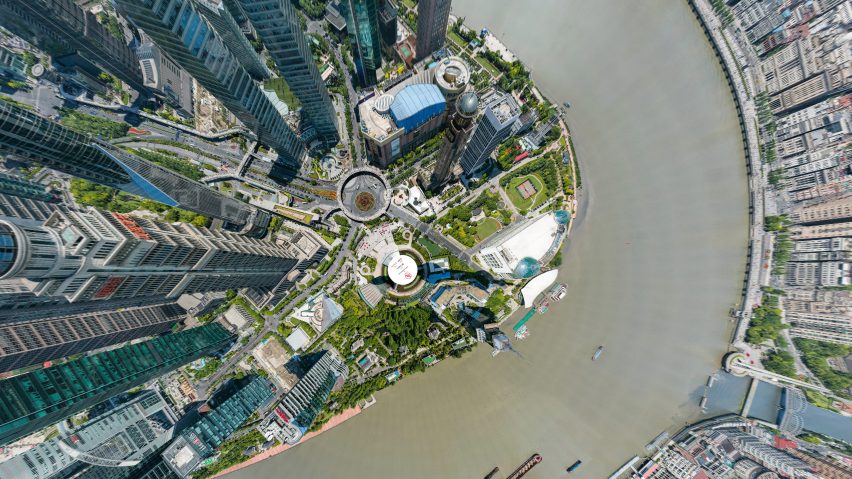Faces and licence plates are among the details that can be clearly seen in an ultra-high-resolution bird's-eye photograph of Shanghai, created by Chinese company Bigpixel Technology.
Shot from 230 metres up the city's Oriental Pearl Tower, the BigPixel image offers a 360-degree panorama of Shanghai that users can pan across and zoom into, so that even people and objects at ground level appear identifiable.
The clarity comes because the image is made up of 195 gigapixels — that is 195 billion pixels, or 195,000 megapixels. As a reference point, the latest iPhone camera takes photos at 12 megapixels.
The image was created in 2015 but went viral last month, accompanied by rumours that it had been taken using new "quantum technology" fitted to a Chinese satellite.
The reality, according to Bigpixel, is that the image is stitched together from thousands of smaller photos taken by regular cameras with 600 millimetre telephoto lenses to capture close-ups.
Still, the project required a huge amount of processing power. There are 8,700 photos adding up to 2.6 terabytes used in the piece.
The company told Dezeen that it takes a "high-performance professional workstation" to handle a project of this size.
"In order to be quickly accessed by mobile phones around the world, it is necessary to cut it into millions of small pieces, combined with high-performance global cloud computing functions," said Bigpixel, which spent two months on the project.
"When the user zooms in and out, the system senses the visitor's point of interest through the algorithm and automatically loads the corresponding image."
Bigpixel says this is the largest image taken in Asia, and one of the largest in the world.
The company aims to "bring the world closer" by allowing people to explore foreign cities on the internet. It has already created slightly smaller versions of the project in sites including Hong Kong, Beijing, Tiananmen Square.
Before the satellite rumours were debunked, interest in the image was driven partly by concern about Chinese government surveillance, particularly given what is already known about its espionage apparatus.
Anxieties about surveillance have cropped up repeatedly in the designs of the last year, with the USA exploring the theme through two installation at the London Design Biennale and Helm catering to increasing concerns about privacy with its personal server.
Images are courtesy of Big Pixel Technology.

